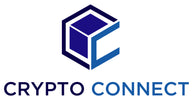Ethereum Shanghai Upgrade
All roads lead to the next upgrade of the Ethereum network - Shanghai - which will add various improvements to the network, including withdrawals for staked Ethereum.
With the successful integration of the Ethereum mainnet with the Beacon chain (PoS chain) known as "The Merge". The network has fully switched from the PoW to the PoS mechanism. Now, it is gearing up for another upgrade called the ‘Shanghai upgrade.’
This upgrade is highly anticipated and promises more important features to the Ethereum network to improve functionality. After numerous speculations and announcements, the Shanghai upgrade release is scheduled to take place in March 2023, according to Ethereum developers.
The developers announced that the forthcoming Shanghai upgrade—scheduled for March—will allow stakers to withdraw locked Ethereum since the release of the Beacon Chain in December 2020.
What Is the Ethereum Shanghai Upgrade?
The Shanghai upgrade or Shanghai hard fork is the next major upgrade the Ethereum network will undergo. It will bring several significant improvements and other minor ones to the chain.
As mentioned above, devnet will kick-start the journey toward the Shanghai upgrade. Following the Pre-Shanghai testnet—Shandong—launch in October 2022, Ethereum DevOps introduced some minor improvement proposals, including EIP-3670: EOF-Code Validation. The others are:
1. EIP-3651: Warm COINBASE. The COINBASE addresses will change from the initially ‘cold’ to ‘warm’ through the Shanghai hard fork. As a result, when validating blocks, network validators will be able to receive transaction fees. In addition, gas fees will be reduced for network builders, one of the most important network players, to carry out their advanced transactions because they won’t have to pay for unsuccessful transactions any longer.
2. EIP-3855: PUSH0 Instruction. With the aid of this EIP, the Ethereum Virtual Machine (EVM) will receive a new command that will enable smart contracts to become smaller and optimize contract code.
3. EIP-3860: Limit and Meter Initcode. The EIP sets a maximum size limit for the initcode at 49152. In addition, for each 32-byte block of initcode, a charge of 2 gas is added to indicate the value of jumpdest-analysis.
What Came Before the Shanghai Upgrade?
As with previous upgrades, there is a testnet, which allows developers to check for bugs and other issues before the launch. The Shanghai upgrade’s new testing network, known as ‘devnet 2,’ was launched on January 11 to ensure they meet the schedule. The developers introduced the testing network a few months after ‘devnet 1,’ which was introduced in November 2022.
The main purpose of the devnet is to test and detect software issues before the Shanghai upgrade, which will enable users to withdraw ETH staked with validators.
The Major Ethereum Improvements to Look Forward To
Beacon Chain Withdrawals
The most important upgrade with Shanghai is the activation of Beacon Chain withdrawals. After several proposals, the Ethereum network settled with the EIP-4895: Beacon chain push withdrawals as operations. EIP-4895 will allow Beacon Chain holders to withdraw their staked ETH as well as accumulated rewards. In addition, it will add a system-level ‘operation’ to ‘push’ validator withdrawals from the beacon chain to the EVM. These operations generate unconditional balance increases for the recipients specified.
EVM Object Format
The EVM object format or EOF looks at separating the code from the data. Currently, The separation of code and data, which is advantageous for on-chain code validation, is highlighted in EIP-3540. It will be a step towards interoperability. Code validation for EOF contracts will be made possible upon deployment via EIP-3670, a companion to EIP-3540. This allows contracts with incomplete PUSH data or unclear instructions to be rejected.
Layer 2 Fee Reductions
Another anticipated improvement. A preliminary version of the process that would allow rollups to verify enormous amounts of data is another hotly debated update that many users expect with Shanghai. To help lower transaction fees on Layer 2 rollups, EIP-4844 proposes a proto-danksharding technique. This would enable more data to be processed on the network, lowering gas prices and improving scalability.
What Should Ether Holders Know About Shanghai Upgrade?
Ether holders should know that due to postponement, the Ethereum Shanghai upgrade launch might come later than the stipulated period, March 2023. This is not new, as the merge and other network upgrades within the crypto community have been postponed for reasons like testing and fixes.
Also, a highly anticipated feature during the merge will be made possible following the Shanghai upgrade. That is the reduction in the gas fee. This has always been a problem for the network since Ethereum is known for its high gas fee, especially when demand is high. This is beneficial for users who make different transactions with ETH.
Additionally, unlike the previous speculations and doubt surrounding staked ETH, it has been confirmed that stakers will be able to withdraw the asset following the merge.
Will Ethereum Fees Decrease After the Upgrade?
As stated above, one of the major upgrades—Layer 2 Fee Reductions—will focus on the gas fee. The proposed method is proto-danksharding, which creates a new type of transaction that can carry cheaper data in substantial fixed-size blobs with a limit on the number of blobs that may be contained in a block.
Conclusion
The plan has been laid out, and the improvements seek to address major issues to improve the network functionality. The road to the Ethereum Shanghai update is getting closer. It is clear when it will happen—March 2023, unlike the vague ‘6-12 months after the merge’ previously reported. And both the developers and users are gearing toward what the changes will bring to the network.
For now, developers are working to improve the network. With the testnet launched, they will finalize implementations: testing programs, fixing errors, and so on before the upgrade drops in march. All we can do is keep our fingers crossed and wait for the drop.

